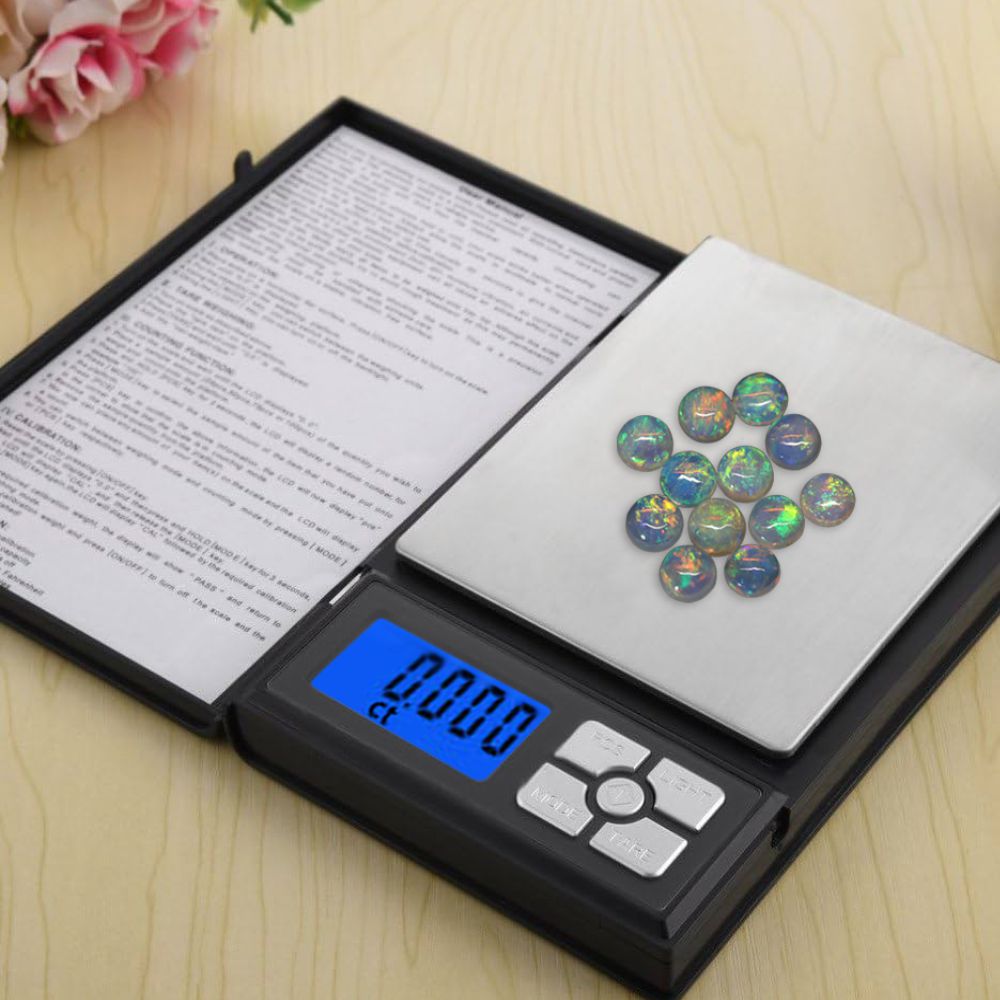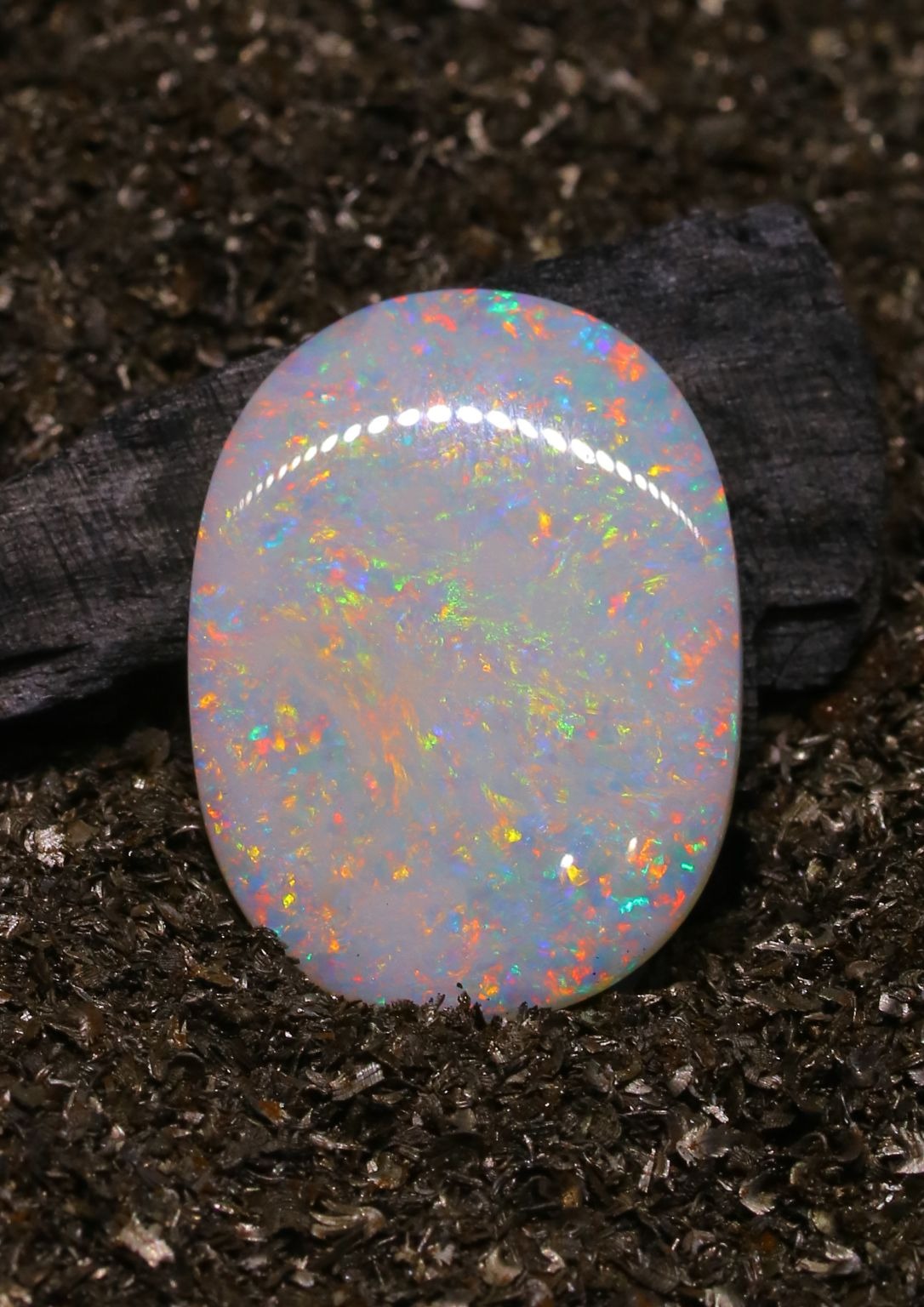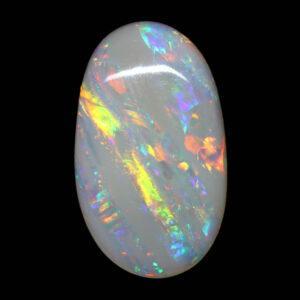
OPAL DESCRIPTION
Opal is the product of seasonal rains that drenched dry ground in regions such as Australia’s semi-desert “outback’ because the showers soaked deep into ancient underground rock, carrying dissolved silica (a compound of silicon and oxygen) downward. During dry periods, for instance, much of the water evaporated, leaving solid deposits of silica in the cracks and between the layers of underground sedimentary rock. As a result, the silica deposits formed opal. More details about opal gemstone is here-
About Opal Gemstone- How it Forms
Opal is known for its unique display of flashing rainbow colors called play-of-color. Although, There are two broad classes of opal: precious and common. Precious opal displays play-of-color, common opal does not.
Firstly, Play-of-color occurs in precious opal stone because it’s made up of sub-microscopic spheres stacked in a grid-like pattern—like layers of Ping-Pong balls in a box. Secondly, As the light waves travel between the spheres, the waves diffract, or bend. In other words, As they bend, they break up into the colors of the rainbow, called spectral colors. Thus, Play-of-color is the result.
However, The color you see varies with the sizes of the spheres. In addition, spheres that are approximately 0.1 micron (one ten-millionth of a meter) in diameter produce violet. Moreover, Spheres about 0.2 microns in size produce red. And, Sizes in between produce the remaining rainbow colors.
Types of Opal Gemstone
Although experts divide gem opals into many different categories, In the conclusion, five of the main types are:
- White or light opal: Opaque to semi-translucent, with low play-of-color against a white or light gray background color, called bodycolor.
- Black opal: Translucent to opaque, with play-of-color against a black or other dark background.
- Fire opal: Opaque to translucent, with brown, yellow, orange, or red bodycolor. This material—which often doesn’t show play-of-color—is also known as “Mexican opal.” It is also called fiery opals.
- Boulder opal: Translucent to opaque, with play-of-color against a light to dark background. Fragments of the surrounding rock, called matrix, become part of the finished gem.
- Crystal or water opal: Transparent to semitransparent, with a clear background. This type shows exceptional play-of-color.
Above All, The most demanding opals are White Opal and Fire Opal. Since Australia is the biggest supplier of authentic opals worldwide. In the conclusion, You must purchase the original opal from the authentic source in online market.
QUALITY FACTORS

Color
Opal’s spectacular play-of-color can display all the colors of the rainbow.

CLARITY
Experts expect different levels of clarity for different types of opals.

CUT
Fine opals are often cut into perfect shapes that keep as much play-of-color as possible.

CARAT WEIGHT
Opal has relatively low density so even larger sizes can be comfortable to wear.
OVERVIEW
0.2 MICRONS
Grids of silica spheres 0.2 microns in size create red play-of-color flashes.
20% WATER
Opal contains up to 20% water trapped in its silica structure.
1829
The novel “Anne of Geierstein” gave opal a reputation of being unlucky.
FACTS
- Mineral: Hydrated Silica
- Chemistry: SiO2•nH2O
- Color: All colors
- Refractive index: 1.37-1.47
- Birefringence: None
- Specific gravity: 2.15 (+0.08 – +0.90)
- Mohs Hardness: 5 to 6.5
Treatments
There are a number of processes used to alter the color, apparent clarity, or improve the durability of gems.
Learn more....
Synthetics
Some gemstones have synthetic counterparts that have essentially the same chemical, physical, and optical properties, but are grown by man in a laboratory.
Learn more....
Imitations
Any gem can be imitated—sometimes by manmade materials or by natural materials chosen by man to impersonate a particular gem.
Learn more....







